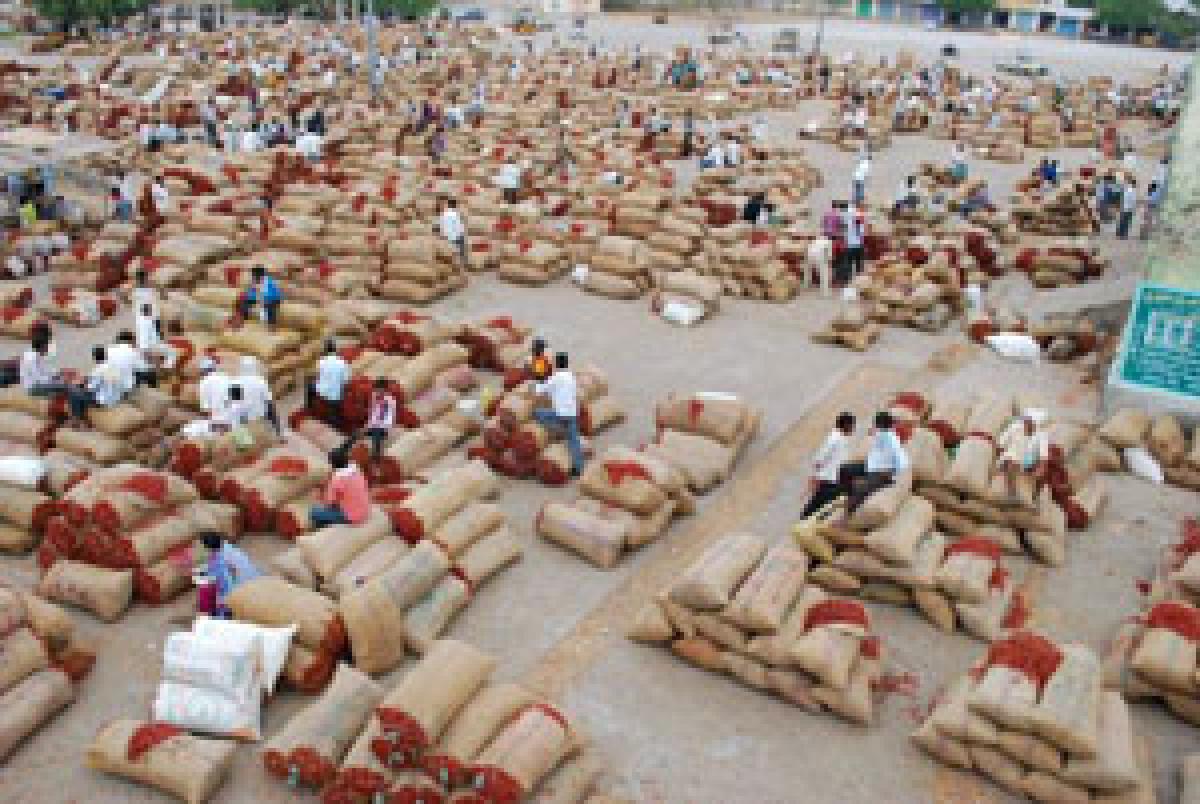Live
- AIADMK's big meet discusses 2026 polls, prospective alliances
- BJP questions Congress-Shiv Sena (UBT) alliance over Aaditya Thackeray's Savarkar-Nehru remark
- Maha Oppn to boycott customary CM tea meet, cites rising farmers' distress, atrocities against Dalits
- Mikheil Kavelashvili is new Georgian President
- He makes things look easy: Smith on 241-run partnership with Head
- Decline in TB cases & deaths in India ‘remarkable’, shows ‘political commitment’, says former WHO Director
- PKL 11: Delhi dedicates win over Haryana to ‘junior express’
- Cyclone kills 14 in French territory Mayotte
- 3rd Test: Head, Smith centuries flatten India on Day 2
- AAP Announces Final Candidate List For 2025 Delhi Assembly Elections, Kejriwal To Contest From New Delhi
Just In

On average, a farmer gets no more than 10 per cent to 30 per cent of the cost you pay for his produce, as IndiaSpend has reported, primarily because the farmer cannot sell directly to consumers and large companies, thanks to an archaic law that delivers commissions to layers of agents, usually linked to politicians
India’s biggest reform to transform the life of a crisis-ridden farmer is 91.6 per cent behind schedule this year, prompting Prime Minister Narendra Modi to promise in five months what could not be done over the last 10.
As many as 250 agricultural markets nationwide (of 585 selected) were supposed to have been linked by 2015-16 to a common nationwide electronic platform, but only 21 markets in eight states have been linked – as of March 2016 – to what is called the National Agricultural Market (NAM) platform.
On average, a farmer gets no more than 10 per cent to 30 per cent of the cost you pay for his produce, as IndiaSpend has reported, primarily because the farmer cannot sell directly to consumers and large companies, thanks to an archaic law that delivers commissions to layers of agents, usually linked to politicians.
Despite the slow progress, the target of linking 585 markets to the NAM by 2018 stays unchanged, according to a statement issued on April 14, 2016, by the Ministry of Agriculture. This means that 564 markets must be linked in two years, 26 times the number (21) linked over the last 10 months. Last week Prime Minister Narendra Modi promised to link 200 markets over the next five months. The NAM platform will allow anyone from any part of India to buy agricultural produce from any farmer from any part of the country.
There are 2,477 principal agricultural markets and 4,843 sub-markets (smaller than principal markets) that buy and sell agricultural produce in India. The NAM target of 585 thus covers only 25 per cent of the India’s principal agricultural markets.
The law that helps agents and politicians
The Agricultural Produce Marketing Committee (APMC) Act of a state regulates the purchase of agricultural products, such as cereals, pulses, fruits and vegetables for that region. It hobbles farmers, imposing multiple levies on produce and disallows direct sales to private companies. “The continued presence of regulations of APMC Acts in most commodities in most states has compelled the farmer
to sell produce only in the government-controlled marketing yards,” said a December 2015 NITI Aayog report, Raising Agricultural Productivity and Making Farming Remunerative for Farmers.
“The APMC market yards are subject to vast technical as well as marketing inefficiencies that undermine the prices that farmers receive.”
Bihar is the only state to have repealed the APMC Act in 2006. Kerala never enacted APMC legislation, but it did not develop marketing infrastructure either. “APMCs levy multiple fees, of substantial magnitude, that are non-transparent and hence a source of political power,” said the Economic Survey of 2015-16 (Volume 1, Chapter 8).
For instance, at the principal market yard for Mumbai city (at Vashi), farmers must pay two per cent commission to agents, who charge further commissions that range from 6.5 per cent (on onions) to 10 per cent (on vegetables), the survey said.
The southern state of Karnataka has pioneered modern agriculture marketing by unifying 51 of 155 principal markets statewide in collaboration with the National Commodity Exchange, a trading platform for commodities.
Abhishek Waghmare (In arrangement with IndiaSpend.org, a data-driven, non-profit, public interest journalism platform, with which Abhishek Waghmare is an analyst. The views expressed are those of IndiaSpend. The author
can be contacted at [email protected])

© 2024 Hyderabad Media House Limited/The Hans India. All rights reserved. Powered by hocalwire.com







